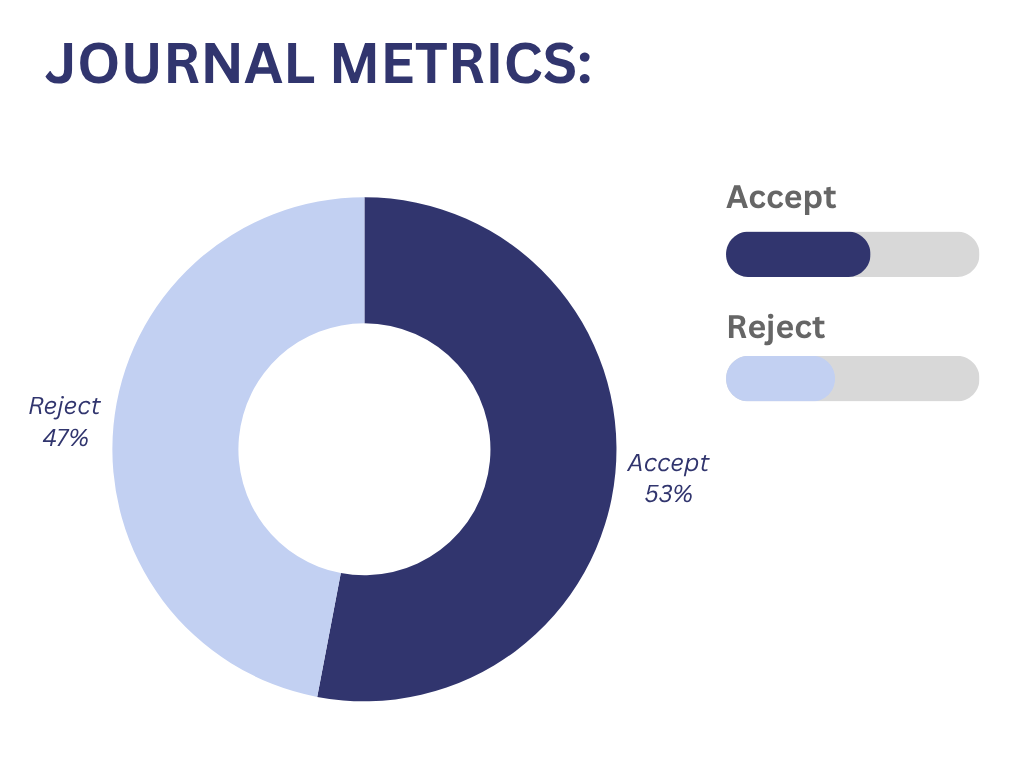Analyzing Challenges in Enterprise Resource Planning (ERP) Implementation in a Safety Inspection Company: an IVT2IF DEMATEL Approach
Abstract
Implementing Enterprise Resource Planning (ERP) systems is crucial for modern businesses, offering integrated solutions that streamline operations and enhance decision-making. However, in specialized sectors such as safety inspection within the Readymade Garment (RMG) industry, ERP implementation presents unique challenges due to the complexity and scope of operations. This research addresses the critical need to understand and systematically address these challenges, particularly in a safety inspection company focused on fire, electrical, structural, and boiler safety. Despite extensive research on ERP implementation in various industries, there is a significant gap in understanding the specific challenges faced by safety inspection companies in the RMG sector. To fill this gap, this study employs the Interval-Valued Type-2 Intuitionistic Fuzzy (IVT2IF) Decision-Making Trial And Evaluation Laboratory (DEMATEL) method to identify, rank, and analyze the interrelationships between ERP implementation challenges. The research identifies fifteen major obstacles, including "Vendor Selection and Management" (D+R = 11.347, D-R = -1.223), "Data Migration" (D+R = 10.194, D-R = -1.891), and "Customization Requirements" (D+R = 11.137, D-R = -0.458). The results highlight "Change Management" (D+R = 8.866, D-R = 1.772) and "Scalability and Future-Proofing" (D+R = 7.370, D-R = 1.753) as the primary causal factors influencing the implementation process. In contrast, "Data Migration" and "Compliance and Security" are significant effect challenges, dependent on successfully managing other factors. By understanding the causal relationships between challenges, companies can prioritize their efforts in key areas to mitigate the most impactful risks during ERP implementation. This approach not only enhances the efficiency and effectiveness of ERP systems but also ensures regulatory compliance and improved decision-making, ultimately contributing to safer working environments in the garment industry.
Keywords:
Enterprise Resource Planning, Readymade garment, Safety inspection, Decision making trial and evaluation laboratory, Interval-valued type-2 intuitionistic fuzzyReferences
- [1] Yousuf, H., Gaid, M. L., Salloum, S. A., & Shaalan, K. (2021). Case study of erp implementation in ceramic company. The international conference on artificial intelligence and computer vision (pp. 769–782). Springer . DOI: 10.1007/978-3-030-76346-6_68
- [2] Weerasekara, U., & Gooneratne, T. (2023). Enterprise resource planning (ERP) system implementation in a manufacturing firm: rationales, benefits, challenges and management accounting ramifications. Journal of accounting and management information systems, 22(1), 86–110. DOI:10.24818/jamis.2023.01005
- [3] Kulikov, I., Semin, A., Skvortsov, E., Ziablitckaia, N., & Skvortsova, E. (2020). Challenges of enterprise resource planning (ERP) implementation in agriculture. Journal of entrepreneurship and sustainability issues, 7(3), 1847–1857. DOI:10.9770/jesi.2020.7.3(27)
- [4] Malik, M. O., & Khan, N. (2020). Analysis of ERP implementation to develop a strategy for its success in developing countries. Production planning and control, 32(12), 1–16. DOI:10.1080/09537287.2020.1784481
- [5] Christiansen, V., Haddara, M., & Langseth, M. (2022). Factors affecting cloud ERP adoption decisions in organizations. Procedia computer science, 196, 255–262. https://doi.org/10.1016/j.procs.2021.12.012
- [6] Pandey, A. K., Singh, R. K., Jayesh, G. S., Khare, N., & Gupta, S. K. (2022). Examining the role of enterprise resource planning (ERP) in improving business operations in companies. ECS transactions, 107(1), 2681–2696. DOI:10.1149/10701.2681ecst
- [7] Pandey, R. K., & Kumar, P. (2023). Challenges and opportunities of ERP implementation in Indian SMEs: a case study of Jharkhand. Materials today: proceedings. https://doi.org/10.1016/j.matpr.2023.02.150
- [8] Debnath, B., Taha, M. R., Siraj, M. T., Jahin, M. F., Ovi, S. I., Bari, A. B. M. M., … & Raihan, A. (2024). A grey approach to assess the challenges to adopting sustainable production practices in the apparel manufacturing industry: implications for sustainability. Results in engineering, 22, 102006. DOI:10.1016/j.rineng.2024.102006
- [9] Pamucar, D., Ulutaş, A., Topal, A., Karamaşa, Ç., & Ecer, F. (2024). Fermatean fuzzy framework based on preference selection index and combined compromise solution methods for green supplier selection in textile industry. International journal of systems science: operations and logistics, 11(1), 2319786. DOI:10.1080/23302674.2024.2319786
- [10] Palanikumar, M., Kausar, N., Pamucar, D., Khan, S., & Shah, M. A. (2024). Complex pythagorean normal interval-valued fuzzy aggregation operators for solving medical diagnosis problem. International journal of computational intelligence systems, 17(1), 1–28. DOI:10.1007/s44196-024-00504-w
- [11] Rong, Y., Yu, L., Liu, Y., Simic, V., Pamucar, D., & Garg, H. (2024). A novel failure mode and effect analysis model based on extended interval-valued q-rung orthopair fuzzy approach for risk analysis. Engineering applications of artificial intelligence, 136, 108892. DOI:10.1016/j.engappai.2024.108892
- [12] Siraj, M. T., Debnath, B., Kumar, A., Mainul Bari, A. B. M., Samadhiya, A., & Payel, S. B. (2023). Evaluating barriers to sustainable boiler operation in the apparel manufacturing industry: implications for mitigating operational hazards in the emerging economies. PLoS one, 18(4), e0284423. DOI:10.1371/journal.pone.0284423
- [13] Debnath, B., Siraj, M. T., Rashid, K. H. O., Mainul Bari, A. B. M., Karmaker, C. L., & Aziz, R. Al. (2023). Analyzing the critical success factors to implement green supply chain management in the apparel manufacturing industry: Implications for sustainable development goals in the emerging economies. Sustainable manufacturing and service economics, 2, 100013. DOI:10.1016/j.smse.2023.100013
- [14] Zeebaree, S. R. M., Salim, B. W., Zebari, R. R., Shukur, H. M., Abdulraheem, A. S., Abdulla, A. I., & Mohammed, S. M. (2020). Enterprise resource planning systems and challenges. Technology reports of kansai university, 62(4), 1885–1894.
- [15] Mahmood, F., Khan, A. Z., & Bokhari, R. H. (2020). ERP issues and challenges: a research synthesis. Kybernetes, 49(3), 629–659. DOI:10.1108/K-12-2018-0699
- [16] Mohanty, P. K., Sekhar, S. F. C., & Shahaida, P. (2022). Determinants of ERP adoption, user satisfaction, and user engagement. International journal of information system modeling and design, 13(1), 1–16. DOI:10.4018/IJISMD.297044
- [17] Usmani, U. A., Happonen, A., & Watada, J. (2024). ERP integration: enhancing collaboration in virtual and extended enterprises. Lecture notes in networks and systems (Vol. 828, pp. 161–178). Springer. DOI: 10.1007/978-981-99-8111-3_16
- [18] Salih, S. H., Abdelsalam, S., Hamdan, M., Abdelmaboud, A., Hamzah, M., Hilal, A. M., & Motwakel, A. (2022). Critical success factors for ERP systems’ post-implementations of SMEs in Saudi Arabia: a top management and vendors’ perspective. IEEE access, 10, 108004–108020. DOI:10.1109/ACCESS.2022.3202954
- [19] Pattanayak, S., & Roy, S. (2015). Synergizing business process reengineering with enterprise resource planning system in capital goods industry. Procedia-social and behavioral sciences, 189, 471–487. DOI:10.1016/j.sbspro.2015.03.194
- [20] Al-Amin, M., Hossain, T., Islam, J., Biwas, S. K., & others. (2023). History, features, challenges, and critical success factors of enterprise resource planning (ERP) in the era of industry 4.0. European scientific journal, esj, 19(6), 31. https://papers.ssrn.com/sol3/papers.cfm?abstract_id=4376127
- [21] Junior, C. H., Oliveira, T., & Yanaze, M. (2019). The adoption stages (evaluation, adoption, and routinisation) of ERP systems with business analytics functionality in the context of farms. Computers and electronics in agriculture, 156, 334–348. DOI:10.1016/j.compag.2018.11.028
- [22] Barth, C., & Koch, S. (2019). Critical success factors in ERP upgrade projects. Industrial management and data systems, 119(3), 656–675. DOI:10.1108/IMDS-01-2018-0016
- [23] Elragal, A., & Hassanien, H. E. D. (2019). Augmenting advanced analytics into enterprise systems: a focus on post-implementation activities. Systems, 7(2), 31. DOI:10.3390/systems7020031
- [24] Alzahrani, A., Mahmud, I., Thurasamy, R., Alfarraj, O., & Alwadain, A. (2021). End users’ resistance behaviour paradigm in pre-deployment stage of ERP systems: evidence from Bangladeshi manufacturing industry. Business process management journal, 27(5), 1496–1521. DOI:10.1108/BPMJ-08-2019-0350
- [25] Payel, S. B., Ahmed, S. M. F., Anam, M. Z., & Siraj, M. T. (2023). Exploring the barriers to implementing solar energy in an emerging economy:implications for sustainability [presentation]. Proceedings of the international conference on industrial engineering and operations management manila, philippines (pp. 7–9). DOI: 10.46254/an13.20230584
- [26] Siraj, M. T., Hossain, M. T., Ahmed, S. F., & Payel, S. B. (2022). Analyzing challenges to utilizing renewable energy in the context of developing countries: policymaking implications for achieving sustainable development goals [presentation]. Proceedings of the first australian international conference on industrial engineering and operations management, sydney, australia (pp. 20–21). DOI: 10.46254/AU01.20220422
- [27] Debnath, B., Shakur, M. S., Siraj, M. T., Bari, A. B. M. M., & Islam, A. R. M. T. (2023). Analyzing the factors influencing the wind energy adoption in Bangladesh: a pathway to sustainability for emerging economies. Energy strategy reviews, 50, 101265. DOI:10.1016/j.esr.2023.101265



